I’m going to do a dual book report on two of the three books I bought at the book signing at ABC Books last month because they have some similarities that I’ll talk about at the end.
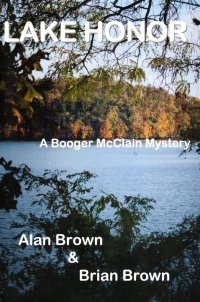 After reading a chonking Stephen King book and a shorter palate cleanser on Descartes, I thought, wouldn’t it be something if I read the author-signed books from ABC Books soon after buying them instead of years later? So I picked up what is the first chronologically in the series, although the author I met (the son of the father and son duo) says you can read the three books in any order, but I went with the first one first.
After reading a chonking Stephen King book and a shorter palate cleanser on Descartes, I thought, wouldn’t it be something if I read the author-signed books from ABC Books soon after buying them instead of years later? So I picked up what is the first chronologically in the series, although the author I met (the son of the father and son duo) says you can read the three books in any order, but I went with the first one first.
The book deals with a fictionalized version of a real case: In the 1970s, two young men were found floating in the fountain pond on the School of the Ozarks, now the College of the Ozarks, campus. They were fully clothed, and the authorities pretty quickly said it was death by misadventure or drugs, maybe, and kind of swept it under the rug. A student at the school ends up re-evaluating his attendance there and quits, only to come back a year later to interview people about the killings for a story. He meets a private investigator, Booger McClain, who tells the story. So this book has two frame stories, really: In the present day, the former student is thinking about the case and comes back to town; and the second, which dominates the book, is the private investigator telling the story of his investigations along with some scenes with the principals in the action, including the boys who died. So the narrative takes place in real time, sort of, as events unfold, but it’s partially told by a private investigator a year later. And the now frame around the whole thing really doesn’t add anything.
The book, like the one that follows, has some typos (altar is spelled alter a couple of times) and a couple of little problems that factchecking would solve, like:
In fact, when I first watched the movie “Halloween,” and saw the mental hospital where Jason escaped, I immediately thought about that dorm.
C’mon, man, we can tell our Jason from our Michael Myers, ainna? We can even spell Myers right on the first try. You know, a dilligent fact-checker would have found this, but when writing and editing our own work, we check on things we’re uncertain of, but not the things we know (that just ain’t so). It’s always the one little throwaway that goes awry.
“Where are you staying?” he asked after a few seconds.
“The Bel Air Motel on 67,” I said.
Highway 67 runs along the eastern part of the state, not the western part, although I understand why it would be top of mind to the authors–it runs through south St. Louis County where they live (and where I once lived).
There are some other anachronisms and things that make one wonder–one of the dead young men played football for Kickapoo; I had thought Kickapoo opened in 1972, which would have made this iffy, but Kickapoo actually opened in 1971, which would make this more plausible. Coupled with the typos, though, one wonders if it was really that way.
 This Booger McClain mystery takes place in the present day, but again it deals with a crime that occurred decades ago. In this case, it’s the disappearance of three women, two recent high school graduates and a mother of one of them, in 1992. This story still resonates in the Springfield community–every so often, it pops back into the news when it is featured on a podcast or in a book such as this one. My beautiful wife informed me that she had already bought this book during its initial publicity burst. She was in Springfield when this happened (and an attractive young woman), and she went to school with the two recent graduates who disappeared. So this story resonates with her, and it’s one of the top two defining crimes that really shook Springfield (the other was the 1904 lynching on the square for which Springfield is only now seemingly emerging from self-flagellation).
This Booger McClain mystery takes place in the present day, but again it deals with a crime that occurred decades ago. In this case, it’s the disappearance of three women, two recent high school graduates and a mother of one of them, in 1992. This story still resonates in the Springfield community–every so often, it pops back into the news when it is featured on a podcast or in a book such as this one. My beautiful wife informed me that she had already bought this book during its initial publicity burst. She was in Springfield when this happened (and an attractive young woman), and she went to school with the two recent graduates who disappeared. So this story resonates with her, and it’s one of the top two defining crimes that really shook Springfield (the other was the 1904 lynching on the square for which Springfield is only now seemingly emerging from self-flagellation).
Like Lake Honor, the book centers on a writer coming to Booger McClain to the story of his investigation. McClain has a war room with evidence in a seemingly abandoned warehouse on the north side of town, and he lets the writer review it. Someone tries to break into the evidence room, though, which leads McClain to believe he’s close to solving the mystery. So this book has a little more action in it, but it’s very similar to Lake Honor in its storytelling and resolution.
I flagged a couple of things in this book as well.
“Pull into the next parking lot,” the man in the back ordered his partner. That parking lot was a 24-hour Wal-Mart grocery a few miles from the Levitt home.”
It’s a quibble, but in those days, the Walmarts were Walmarts; the Walmart Neighborhood Market was a ways off, and the Walmarts of the day were more department stores. It’s only later that they would expand their grocery offerings.
“I was a sheriff for a time in Branson back in the 60’s.”
McClain would not have been a sheriff for Branson. Sheriff is a county office; he would have been Taney County Sheriff, which is an elected position by the way. But city folk can be forgiven for thinking that sheriff is what you call the police in a small town.
Again, some anachronisms and errata that one might overlook if it weren’t for the typos.
Also, I recently read a post on Mad Genius Club about whether authors were including the Malingering Unpleasantness in their works; this book mentions the Wuhan Flu conditions, as a business slowdown gives the writer in the story time to come to Springfield to interview McClain. It’s mentioned, but not doted upon.
At any rate, the books were very similar in the following:
- They’re both rather expository. The stories are told, often by McClain, rather than experienced or shown. Which is to be expected. Although both have elements of contemporary action where McClain is not present, but even those passages are telling more than vivid creations of a scene.
- Which is probably explained a bit by the fact that the crimes occurred decades before the actual setting of the books. Lake Honor has more of recreations of scenes contemporaneous to the crime; Gone in the Night has one, and it’s one that thwarts McClain’s assumptions of the case.
- Neither book “solves” the case. Lake Honor alludes to possible solutions. Death in the Night offers a section where McClain presents his theory of the case–which, as I mentioned, is counter to the one contemporaneous scene (quoted above, where the perpetrator has a partner, whereas in Booger’s theory of the case, a suspect acts alone).
- The authors Asimov themselves into the story. In the first, “Alan” is Alan, the author. In the second, the writer is “Brian,” the author, and the biographies of the characters in the story kind of match the authors’ stories. I’m not sure why to choose such a frame–perhaps to keep the writing interesting for the authors themselves?
- In both books, some information is repeated, almost in the same words, as though they were in the process of moving it, but forgot to remove it from the initial location in the narrative.
That said, I found the books readable and a bit compelling–I read them right after each other, and I started the third book, which is an original, already. So let that be my endorsement as it is: The books are clearly self-published, with the typos to attest, but they’re not the worst of the self-published I’ve seen and put down.
The books affected me so much that when I saw the headline Branson family hires high profile private investigator to join search for missing son, I immediately thought of Booger McClain.
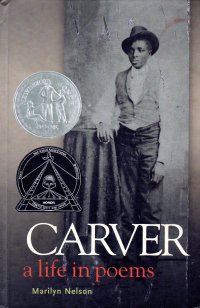 I picked up this Scholastic book to browse during a football game, and I thought, a collection of poems about the life of George Washington Carver for kids? Who needs that? Who would read that?
I picked up this Scholastic book to browse during a football game, and I thought, a collection of poems about the life of George Washington Carver for kids? Who needs that? Who would read that?


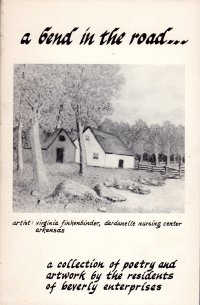 As you might know, gentle reader, I consume a lot of what I call “Grandma Poetry.” These are usually chapbooks published by older women with themes of family and God; the authors are not professional poets and probably don’t even have a magazine credit on their copyright pages. Most of it is not sublime or exhilirating; some of it is nice. If you read the collected works of a Great Poet, you’ll find their works are limited to the really, really good once in a while and maybe nice most of the time.
As you might know, gentle reader, I consume a lot of what I call “Grandma Poetry.” These are usually chapbooks published by older women with themes of family and God; the authors are not professional poets and probably don’t even have a magazine credit on their copyright pages. Most of it is not sublime or exhilirating; some of it is nice. If you read the collected works of a Great Poet, you’ll find their works are limited to the really, really good once in a while and maybe nice most of the time.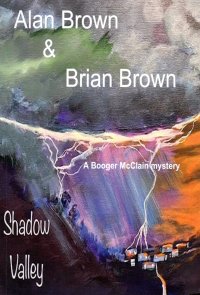 So as I mentioned when I reported on
So as I mentioned when I reported on  After reading a
After reading a  This Booger McClain mystery takes place in the present day, but again it deals with a crime that occurred decades ago. In this case, it’s the disappearance of three women, two recent high school graduates and a mother of one of them, in 1992. This story still resonates in the Springfield community–every so often, it pops back into the news when it is featured on a podcast or in a book such as this one. My beautiful wife informed me that she had already bought this book during its initial publicity burst. She was in Springfield when this happened (and an attractive young woman), and she went to school with the two recent graduates who disappeared. So this story resonates with her, and it’s one of the top two defining crimes that really shook Springfield (the other was the 1904 lynching on the square for which Springfield is only now seemingly emerging from self-flagellation).
This Booger McClain mystery takes place in the present day, but again it deals with a crime that occurred decades ago. In this case, it’s the disappearance of three women, two recent high school graduates and a mother of one of them, in 1992. This story still resonates in the Springfield community–every so often, it pops back into the news when it is featured on a podcast or in a book such as this one. My beautiful wife informed me that she had already bought this book during its initial publicity burst. She was in Springfield when this happened (and an attractive young woman), and she went to school with the two recent graduates who disappeared. So this story resonates with her, and it’s one of the top two defining crimes that really shook Springfield (the other was the 1904 lynching on the square for which Springfield is only now seemingly emerging from self-flagellation).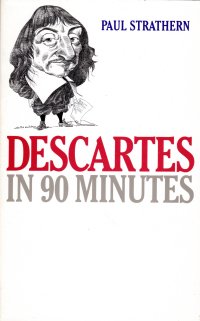 It’s been a while since I read Discourses on Method—
It’s been a while since I read Discourses on Method— You might have noticed, gentle reader, a dearth of book reports here at MfBJN over the last couple of weeks (what? Poems was
You might have noticed, gentle reader, a dearth of book reports here at MfBJN over the last couple of weeks (what? Poems was  I was in the mood for a chapbook, so I picked up this recent purchase. I got it at a garage sale here in Springfield for fifty cents at a garage sale whose proprietrix said they had a great selection of books, but which looked to be mostly college Spanish and English literature textbooks. I think I came away with two books: this book and another piece of classical literature in the expensive but cheap college paperback edition–it’s lost in the stacks already, so I cannot tell you what it was.
I was in the mood for a chapbook, so I picked up this recent purchase. I got it at a garage sale here in Springfield for fifty cents at a garage sale whose proprietrix said they had a great selection of books, but which looked to be mostly college Spanish and English literature textbooks. I think I came away with two books: this book and another piece of classical literature in the expensive but cheap college paperback edition–it’s lost in the stacks already, so I cannot tell you what it was.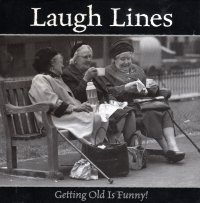 This book is kind of similar to
This book is kind of similar to  You know, I have kind of enjoyed the last couple of Executioner novels (all right, mostly
You know, I have kind of enjoyed the last couple of Executioner novels (all right, mostly 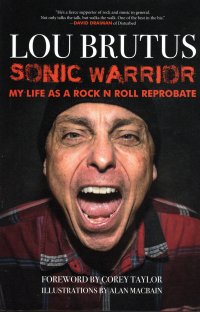 My beautiful wife, who also gave me
My beautiful wife, who also gave me  I got this book
I got this book 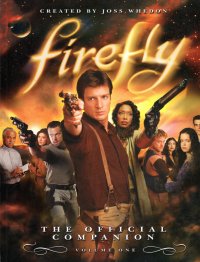 These books collect the scripts of the fourteen episodes of the short-lived television program Firefly which was essentially Joss Whedon’s western in space. It’s kind of funny: Around the turn of the century, when this program was briefly on the air, the geek community quite embraced it, and they embraced it hard. People dressed as the characters for Halloween and used catch phrases from the show (“Shiny” meaning “Cool,” for example). I mean, this kind of went on until my beautiful wife bought the boxed set on DVD and watched it around 2010 followed quickly by the film Serenity which appeared a couple years after the show went off the air. However, I think the show’s cultural moment has passed; now, it’s middle-aged geeks who still sometimes say “Shiny.” Although I could be wrong: I was in a games-and-comics store this weekend, and its selection of role playing games was limited, but one table had three volumes of the Firefly role-playing game displayed prominently. So maybe only my consciousness of it has waned until I bought these books at my
These books collect the scripts of the fourteen episodes of the short-lived television program Firefly which was essentially Joss Whedon’s western in space. It’s kind of funny: Around the turn of the century, when this program was briefly on the air, the geek community quite embraced it, and they embraced it hard. People dressed as the characters for Halloween and used catch phrases from the show (“Shiny” meaning “Cool,” for example). I mean, this kind of went on until my beautiful wife bought the boxed set on DVD and watched it around 2010 followed quickly by the film Serenity which appeared a couple years after the show went off the air. However, I think the show’s cultural moment has passed; now, it’s middle-aged geeks who still sometimes say “Shiny.” Although I could be wrong: I was in a games-and-comics store this weekend, and its selection of role playing games was limited, but one table had three volumes of the Firefly role-playing game displayed prominently. So maybe only my consciousness of it has waned until I bought these books at my 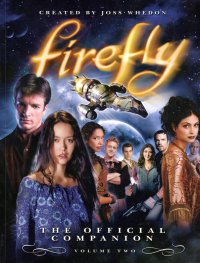 Okay, so as I mentioned, it’s a western in space. The series itself does not go into a lot of exposition, but human settlers have reached other planets after depleting the resources on Earth. A power called the Alliance has won a civil war uniting the planets, but on the frontiers, their presence is not as acutely felt. A leader from the resistance/the Independents/not the Alliance–Mal Reynolds, played by Nathan Fillion, buys an old ship and, along with his second-in-command–Zoe, played by Gina Torres, assembles a crew to trade/smuggle/commit petty crimes on that frontier. They collect a pilot (Wash, played by Steve the Pirate), a mechanic (Kaylee, played by Jewel Staite), a hired goon (Jayne, played by Adam Baldwin), and an itinerant high-quality call girl (Inara, played by Morena Boccarin). They also end up with a priest who might be more than a priest (Shepherd Book, played by Detective Harris from Barney Miller) and a brother and sister on the run from the Alliance, who had the sister in a special “school” to develop her into a killing machine (Sean Maher and Summer Glau). And they have some adventures as their history unfolds along with some hints to why the Alliance was after River, played by Summer. The action is pretty episodic, though, with series business taking a back seat to the adventure of the week.
Okay, so as I mentioned, it’s a western in space. The series itself does not go into a lot of exposition, but human settlers have reached other planets after depleting the resources on Earth. A power called the Alliance has won a civil war uniting the planets, but on the frontiers, their presence is not as acutely felt. A leader from the resistance/the Independents/not the Alliance–Mal Reynolds, played by Nathan Fillion, buys an old ship and, along with his second-in-command–Zoe, played by Gina Torres, assembles a crew to trade/smuggle/commit petty crimes on that frontier. They collect a pilot (Wash, played by Steve the Pirate), a mechanic (Kaylee, played by Jewel Staite), a hired goon (Jayne, played by Adam Baldwin), and an itinerant high-quality call girl (Inara, played by Morena Boccarin). They also end up with a priest who might be more than a priest (Shepherd Book, played by Detective Harris from Barney Miller) and a brother and sister on the run from the Alliance, who had the sister in a special “school” to develop her into a killing machine (Sean Maher and Summer Glau). And they have some adventures as their history unfolds along with some hints to why the Alliance was after River, played by Summer. The action is pretty episodic, though, with series business taking a back seat to the adventure of the week. This is kind of like a pop-up book for adults. An Andrews-McMeel Publishing concoction, you already know that it’s going to be graphically busy, but this book not only features a lot of color and graphics, but it has origami, often birds, posted in, and the table of contents is a separate card inserted into an envelope in front. So it keeps your attention busy for sure, perhaps distracted from the poetry.
This is kind of like a pop-up book for adults. An Andrews-McMeel Publishing concoction, you already know that it’s going to be graphically busy, but this book not only features a lot of color and graphics, but it has origami, often birds, posted in, and the table of contents is a separate card inserted into an envelope in front. So it keeps your attention busy for sure, perhaps distracted from the poetry. Well, this is an Executioner novel. Not the worst of the series, but, again, not something memorable to read. Since I’m splitting my time between reading books and watching movies in the evenings, perhaps I should read something more memorable for my books. Well, if I ever finish Pamela, the old English novel that I am putatively reading currently but very intermittently, I will remember that I read it, although very few of the episodes in those epistles will I recall distinctly.
Well, this is an Executioner novel. Not the worst of the series, but, again, not something memorable to read. Since I’m splitting my time between reading books and watching movies in the evenings, perhaps I should read something more memorable for my books. Well, if I ever finish Pamela, the old English novel that I am putatively reading currently but very intermittently, I will remember that I read it, although very few of the episodes in those epistles will I recall distinctly.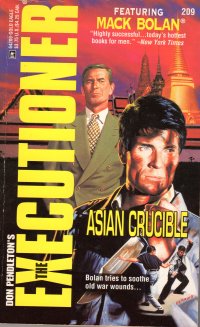 I read this book on my recent little getaway with my beautiful wife. Well, okay, like all the books I read on the trip, I started reading it at home, but I finished it on the trip, okay? As I was about a chapter or two from completion, it was the first I finished but the last I reported on. And in the intervening days, I almost forgot what it was about except Mack Bolan doing Mack Bolan things.
I read this book on my recent little getaway with my beautiful wife. Well, okay, like all the books I read on the trip, I started reading it at home, but I finished it on the trip, okay? As I was about a chapter or two from completion, it was the first I finished but the last I reported on. And in the intervening days, I almost forgot what it was about except Mack Bolan doing Mack Bolan things.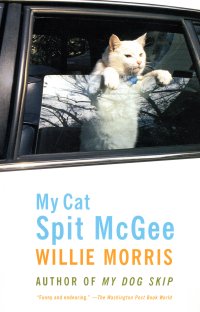 My goodness, I bought this book
My goodness, I bought this book  I started this book right after listening to
I started this book right after listening to 
 I have been pleased with a couple of the Executioner books I’ve picked up lately. This book and
I have been pleased with a couple of the Executioner books I’ve picked up lately. This book and 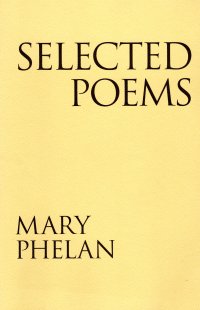 I bought this collection of poems at the
I bought this collection of poems at the  I bought this book almost two weeks ago (already?) when we visited
I bought this book almost two weeks ago (already?) when we visited